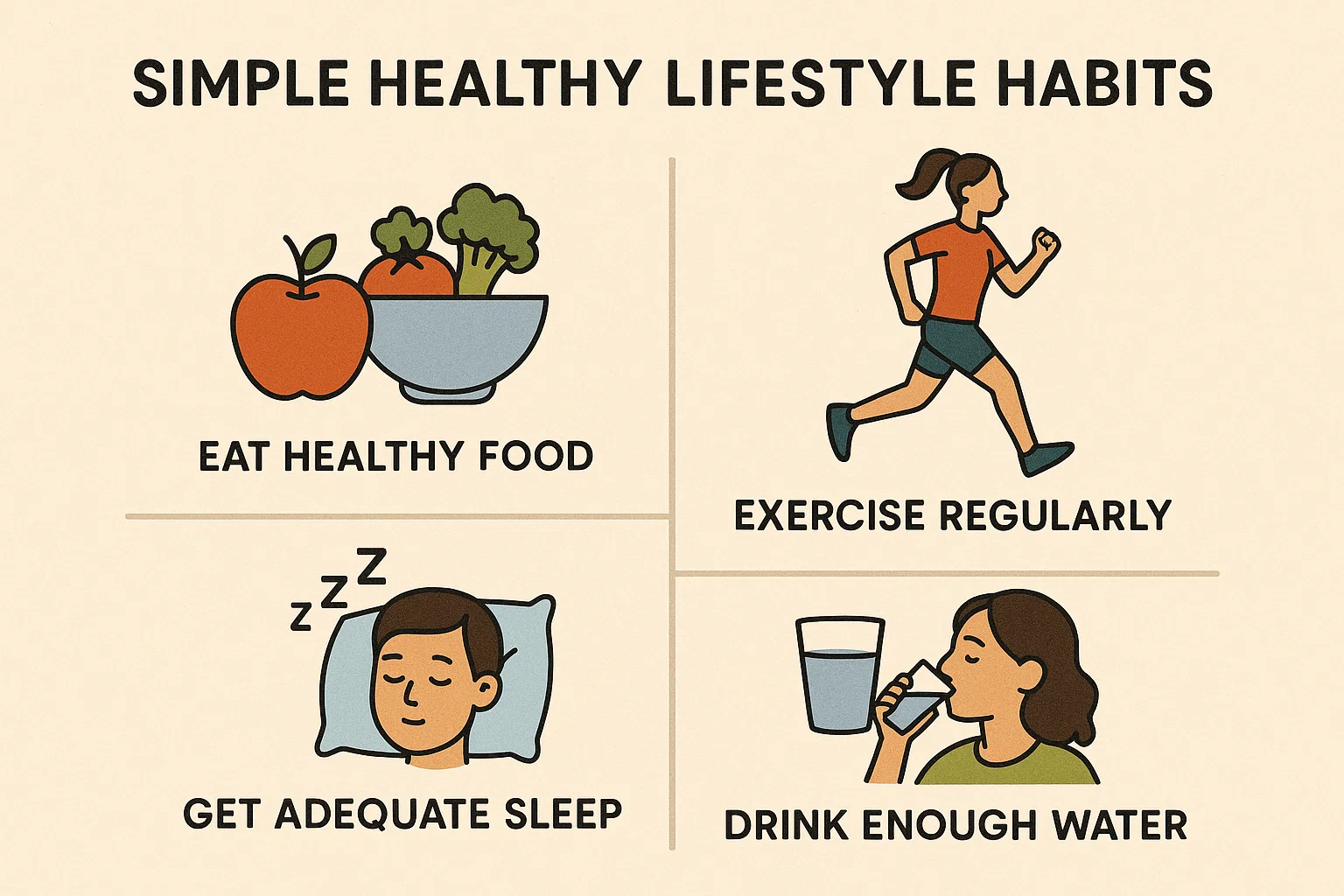
I don’t even know why it happened that our generation, which can afford to work not in mines or in the fields, but in an air-conditioned office with a glass of lat, got such reflective brains. And instead of enjoying life now, we think about our plans, failures, the opinions of others, our own strengths and weaknesses, the global economy, the US withdrawal from WHO, the nomination of Kanye West, or scientific research on how to properly hang toilet paper (by the way, entertaining reading ).
The abundance of information and screens with this information around pushes to say “goodbye” of gray reality and dive into the digital ocean of content right in panties, with a fresh disc of The Last of Us. Realizing all this, one day, I decided that it was necessary (to go to work) with this somehow to fight. How to fight, meditate.
Meditation is an excellent tool for concentration and gaining awareness, the authors of books on psychology, famous actors and businessmen spoke with one voice. Therefore, having surrounded myself with applications, books, subscribing to the telegram channels of Moscow psychotherapists-coaches and Balinese yoga-startups, from January 1, 2020, I began to meditate every day and write about my experience on a blog.
Related: 29 of the best science fiction books everyone should read
2.Does it have any scientific basis at all?
I am also extremely suspicious of all sorts of esotericism and have never even restored the aura or adjusted the biofield (online and with a guarantee), so I decided to study what research on meditation was carried out (by British scientists) by the scientific community. The most complete collection of such studies is contained in the book “Changed character traits.
How Meditation Changes Your Mind, Brain and Body. “The work is the work of Daniel Goleman (American psychologist and author of scientific publications in magazines, many know him from the bestseller “Emotional Intelligence”) and Richard Davidson (professor of psychology and psychiatry, director of the tomography laboratory at the University of Wisconsin).
There is no point in describing the hundreds of tests and experiments that were included in the book, so I will save your time, which I had to spend on 330 pages of this nonfiction, and tell you about the most radical experiments. The authors describe an experiment with the Medoc thermo-stimulator.
This thing allows you to explore the patient’s pain threshold using a plate, touching which causes a burn sensation (only a sensation: it turns out that a person’s pain threshold is very far from the range at which a burn occurs, so in fact the subject does not receive skin damage).
Experienced Zen masters not only endured more pain (2 degrees higher than non-meditators), but also showed less activity in the areas of the brain responsible for assessment. Researchers interpret these facts as confirmation that meditation allows you to decompose any state and sensation into its components (there is pain, there is my reaction to it) and in the “manual mode” to control the reaction of the brain to them ( Joshua Grant et al.
disabling “executive and pain-related areas of the cortex leads to low pain sensitivity in Zen meditators,” Pain 152 (2011): 150–56. ). Devotees of meditation better pass Trier test (The Trier social stress test (TSST )) – the most reliable way known to science activate areas of the brain associated with stress ( Melissa Rosenkranz et al, “Reduced stress response and inflammation in experienced meditators compared with healthy participants control groups selected by age and sex ” Psychoneuroimmunology 68 (2016): 117–25 ).
In TSST, subjects undergo a grueling interview, after which they are forced to subtract 13 sequentially from numbers like 2346, and with each error they are asked to start over (I remember my exam in mathematical logic, maybe I was just participating in the experiment?).
But, what we are all about stress, according to research, those who like to listen to mantras on the rug are more attentive than other people. In the attentiveness experiment, subjects were shown rows of letters and numbers at a rate of 10 characters per minute and periodically asked what signs the participants saw.
Most people missed the second symbol, but the participants in the annual three-month course of Vipassana did not and coped with this test much better than the average group ( H. Slagter et al. “Mental Training Affects the Distribution of Limited Brain Resources,” PLoS Biology 5: 6 (2007) ).
And if that doesn’t seem enough to someone, here’s a link to a study that has proven that meditation slows down brain shrinkage as we age (at the age of 50, the brains of experienced meditators are 7.5 years “younger” than the the same age without meditation experience). And here is another experiment that demonstrated that regular meditation practices increase the size of key areas (pelvis?)
Of the brain: the islet lobe, which attunes us to the internal state, somatomotor areas – the centers responsible for the perception of tactile sensations and pain ( Sarah Lazar et al. coauthors Meditation Experience Associated with Increased Cortical Thickness, Neuroreport 16 (2005) ).
3.How do you start meditating at all?
For me, as a person who keeps money in one application, has fun in another, and self-educates in the third (just kidding, in the third he also has fun), this question was not raised. I chose to study with digital courses and apps. Two hundred days was enough to try the most popular appa in the world of meditation. And who are these leaders – you ask? Let’s turn to statistics.
Christopher Plamen, CEO of the popular meditation app Insight Timer, shared his business development plans on his website (when I saw this, I felt sad that even meditation projects have sales plans) and published the following statistics. The pie chart shows the distribution of time of American users by meditation applications.
In Russia, similar statistics were recently published by the project “We. Here. Now”. The guys conducted a survey of 292 respondents on the use of meditation apps. The top three remained unchanged: Insight Timer (27%), Headspace (11%) and Calm (3%).
The fourth place went to Meditopia (2.5%), and the fifth place was taken by the Russian application “Praktika” (2%). In general, the creation of app for meditation is now experiencing some kind of renaissance. 3-4 years ago there were only a few such services, but now try typing the query “meditation” in the Google Market and you will get lost there, I guarantee.
For six months I have tried more than 20 applications and the aforementioned five are really deservedly present in the top. Because The review of each app in my blog pulled into a separate post, I will outline the general advantages and disadvantages of meditation with the help of applications:
Related: Genetic engineering
4.You can Use your phone for meditation with App:
A. Smartphone is always at hand, this allows you to quickly start and form a steady habit of meditation (this is very important in the first months of practice)
b. You don’t need to study anything on your own: read about techniques, settings and other nuances. The facilitator’s voice will tell you what to do.
c. Most of the services have a wide variety of thematic courses (for example, lessons on concentration, self-esteem, dealing with anxiety, etc.).
d. Almost all applications have game mechanics (meditation statistics, points and “achievements” for regularity) – I know comrades whom this helps to get involved.
e. Some have a social component – you can see the users with whom you meditated, discuss the practice or chat in groups.
f. If you want to meditate without a guide, then almost every app has special meditations with bells for such occasions or a selection of practice music.
5.Disadvantages of Meditation with Apps:
a. In guided meditation, the voice of the leader is very important. The factor is very individual and some applications simply did not suit me, tk. even after changing courses, I could not find a voice that would not irritate me.
b. Sound quality – Unfortunately, not all meditation app makers record in the studio with quality microphones. Aspiration, extraneous noises are very distracting from classes.
c. On 3-4 months of my experiment, when I already knew the techniques and nuances, the guide’s voice was more likely to distract me, so I often meditated without gadgets. And almost all applications are aimed at beginners (it is understandable why this is the most massive market) and offer little to more experienced users.
D. Money – not everyone is ready to spend from 200-500 rubles per month (average subscription cost) for the opportunity to sit in silence with mantras or audio lessons. As for the applications themselves, I will briefly go through the leaders of the rating:
Insight Timer – the service acts as a publisher and provides a platform for thousands of teachers from all over the world to publish their meditations. Thanks to this, here you can find a practice for every taste – children’s meditation, Taoist practices, meditation with a violin or electronic music. English courses are good.
Try, for example, a course with English stand-up comedian and actor Russell Brand. He is best known for the films Fly Away and Escape from Vegas. It was a small discovery for me that the actor, it turns out, has been practicing transcendental meditation for a long time. Courses in Russian are slightly weaker, there are many esoteric affirmations. Of the chips: a mini-social network for meditators.
Headspace is an application that caresses the eye of the visual. The creators have carefully worked out the style, created their own characters, making the app a pleasure to use. The project was conceived by Andy Paddicomb, author of the bestselling book Meditation and Mindfulness. 10 minutes a day that will put your thoughts in order .
It seemed to me that the creators were too carried away by simplification, sometimes I want more depth in the courses, and not just “watched my breath for 10 minutes and ran with a glass of cappuccino to make my startup.” Of the chips – meditations with NBA players.
Calm is probably such a luxury level among similar services. First, the price: the minimum tariff starts at 699 rubles per month. Secondly, the application relies on the stars – meditation-fairy tales for a peaceful fall asleep here are read by Matthew McConaughey, Stephen Fry and other famous personalities.
Meditopia is an international project (headquarters in Berlin and Istanbul, as indicated on their website), while all meditations are adapted for the Russian-speaking population. I must say smartly adapted, the voice of the presenter and the quality of the study of the courses pleasantly surprise. Practice – a service that has already been described in detail by the authors here on vc.ru .
The practice has perhaps the largest variety of courses from Russian-speaking meditation teachers. This is very convenient, because if you suddenly get tired of the style of one author, you can switch to another and continue studying.
6.What types and forms of meditation to use?
Most of the applications offer the now popular mindfulness meditation , i.e. a rather simplified version of the practice, cleared of religion and suitable for Westerners. But I have an experiment! Therefore, I went all out and in six months tried zazen, metta, vipassana, MBSR, Osho dynamic meditation, trataka (practice with a hot candle) and meditation with a glass of red burgundy under YouTube (a joke, unfortunately there is no such thing).
You will need a separate article to describe each technique, so here’s a quick summary. For daily practice, the Vipassana technique is best suited because the principles of relaxing body parts, directing attention and focusing on the breath are familiar even to those who have heard of the technique out of the way and are easy to remember. MBSR (Mindfulness-Based Stress Reduction) suits rationalists to the core, it is the most studied form of meditation, with dozens of studies and scientific evidence.
The technique was originally conceived as a stress-reducing and mindfulness course for outpatient patients experiencing severe pain. Trataka somehow did not suit me at all: firstly, the candle was not always at hand, and secondly, from the continuous viewing of the flame, my eyes were very watery. I was greatly impressed by Osho’s dynamic meditation.
Despite the controversy of the Indian guru (I advise you to watch the Netflix movie “Wild, Wild Country” on this topic ), it is clear that Osho knew the art of meditation. The yogi believed that the usual seated form of practice (zazen or vipassana) was not very suitable for beginners and was more inconvenient than beneficial. Therefore, he came up with his own technique.
My experience of dynamic meditation at the beginning was a bit like a sectarian event. The presenter turned on trance music and the members of the small group began jumping, screaming, shaking their body parts to the beat, wriggling and rolling on the floor. All this continued for some time, after which the presenter rang the gong and the stage of catharsis began, during which it was necessary to observe the sensations.
I remember that it was a rather strong emotional experience, as if you had thrown off some kind of load that you had been carrying for a long time – your soul felt light and well. I think that this is really a good preparation for practice, which is suitable even for beginners – no need to fight the unpleasant sensations in the body that arise during seated meditation, no need to tune in for a long time.
Instead, it is as if you are put under a shower, which quickly brings you to the desired state. In general, despite the nuances and details, almost all meditation techniques are reduced to fixing attention on some object (breath, candle, sensations in the body, etc.) in order to get rid of dependence on the chaotic flow of thoughts that forms our picture of the world. but, in fact, is not the real world.
Letting go of this flow, the ability to look at it from the outside and realize that this mental noise should not command you – these are the basic principles that are found in almost every technique.
Related: Her depression was not alleviated by drugs.
What if I’m bored, hurt, and generally uninteresting?
Once I tried to start running (even before that “great transition”, when all my friends on Instagram suddenly turned from photographers to ultra-marathons) and you know, meditation is not very similar to running. It is just as difficult and unpleasant for you to force yourself to do this at the very beginning of the path.
Just like running, meditation seems to be a very simple matter from the outside, until, going deeper, hundreds of nuances in the form of techniques and methods are revealed to you. And already addicted and feeling the buzz from the process, you just also cannot explain what the miraculous effect of this activity is.I had something like this. The first 2-3 weeks I persistently pulled myself to practice.
Then, with horror, I watched my inner compote of thoughts, experiences, and sudden insiders: “Service for the selection of bath attendants with ratings and delivery of brooms. Hmm, why not a business idea?” and an insistent desire to check something on the phone. An accurate description of my condition at the beginning of Gemma Carrell’s practice
In the fourth week, I struggled with discomfort in my knees and back, which numb from prolonged sitting in an unusual position. In the fifth week, I was more or less accustomed to daily practices, I developed a habit and meditation did not begin to cause me discomfort. Around the second month, I was able to periodically include internal observation and not get carried away with thoughts.
In the third month, I was already quite quickly adjusting my inner focus. In the fourth month, meditation began to bring peace and tranquility, it became not only a habit, an experiment, but also a pleasant experience. At 5-6 months, I began to succeed (albeit in periods), but manage my conscious presence in the present, in real life, and not only on a yoga mat.
8.Why is this all at all?
I will not cite here the stereotyped phrases that meditation helps me to be more attentive, focused and enjoy a full, conscious life on the path to nirvana. The truth is that my goal and the effect of the practice, as I deepened into this “science”, gradually transformed. At first I was looking for an inner space in which I could be alone with my thoughts, putting aside the daily hustle and bustle.
When it turned out, I was a little horrified by this “mental diarrhea” inside myself and began to try to find the control panel for this kaleidoscope of plans, ideas and experiences. The search for this “inner joystick” (Osho called it “inner observer”) brought me to the understanding that the concept of a conscious life cannot be put into just 15-25 minutes in the morning and needs to be carried over into daily life.
At this point,
I was able to get rid of the recurrent attacks of anxiety that were previously encountered; Learned to abstract from external and internal information noise; He began to come to a “working state” faster, without procrastination and doping in the form of coffee, etc. Worked on the deliberate use of gadgets and content consumption; Became more observant, began to feel others better (this helps when communicating and negotiating with colleagues, partners);
Now I am close to the idea in which the effect and purpose of meditation is divided into a wide and deep path (the so-called “awakening”). This concept was first mentioned in one of the oldest treatises on meditation “Visuddhimagga” and is described in more detail in the book that I already mentioned earlier – ” Changed character traits.
How Meditation Changes Your Mind, Brain and Body. On the broad path from meditation, they take only what lies on the surface – the practice of reducing stress, developing mindfulness, focusing.
These are a kind of “side effects” of meditation, which, at the same time, are very important for a modern person, and are widely used in courses and applications all over the world. At the same time, meditation also has a deep goal, for which it was invented. This is the transformation of the personality, the development of changed traits, new qualities that persist even outside of practice.



